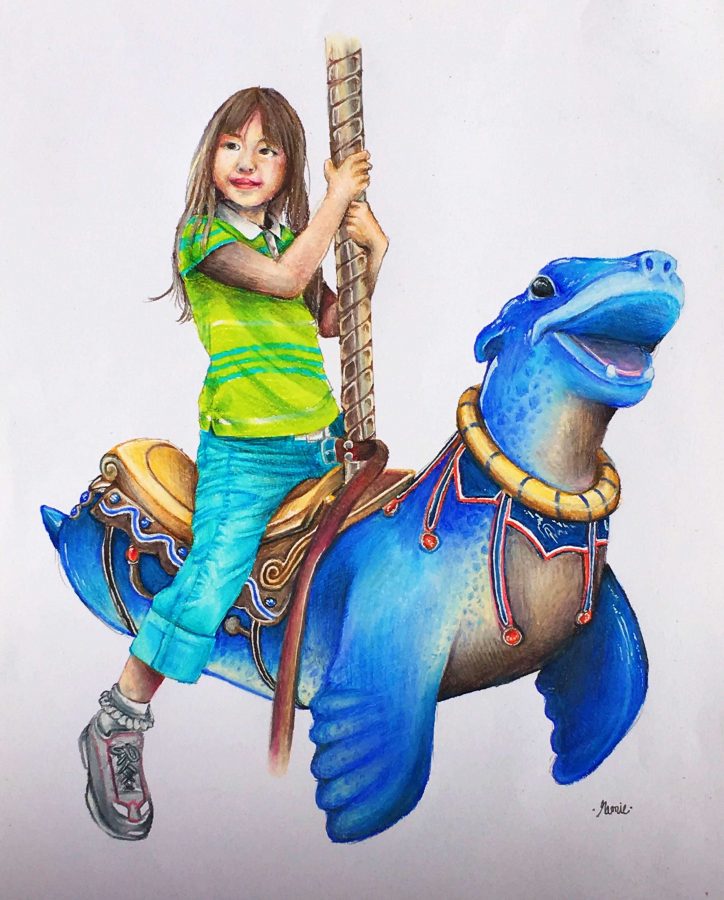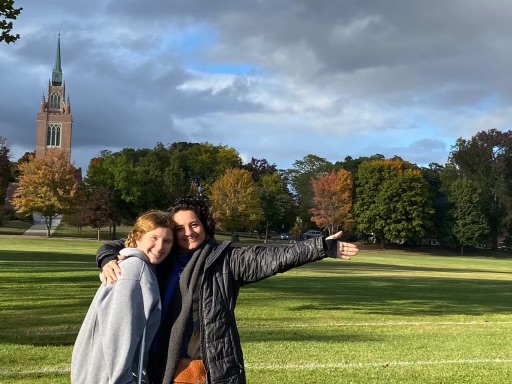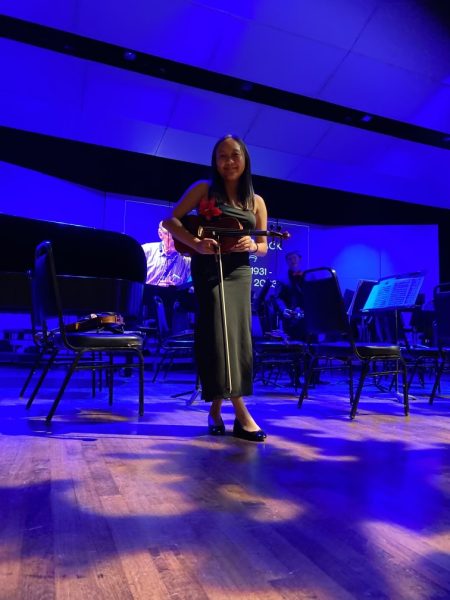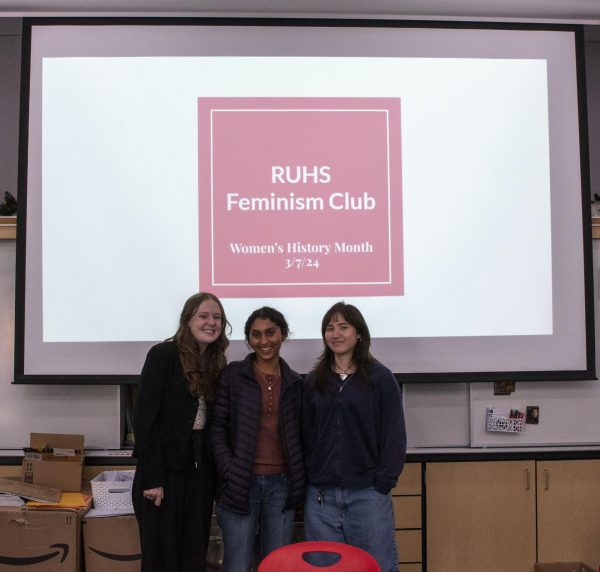Happy medium
Seniors Fotion and Kataoka use art as a form of self-expression
Seniors Namie Fotion and Alysa Kataoka aren’t just any faces in the group of artists attending RUHS. They are separated by their messages of creativity and inspiration and share a piece of themselves with their viewers unseen by anyone else.
When drawing, Fotion uses colored pencils as her preferred medium, or materials used to create a work of art, and prefers realism over other art genres.
“I used to like markers, but now I prefer colored pencils. They make it easier to be very precise and to get a lot of accurate details in a picture. Plus, unlike markers, it’s easier to correct mistakes by covering over what I’ve done with another layer of color. Before it was mainly animations, but now that I’m in AP studio art, I prefer realism because I have all the materials and the concepts are better for realism,” Fotion said.
Fotion realizes the importance of creativity and does her best to inspire others through her own work.
“I think creativity gives me more imagination in life, and I feel like if you have more imagination, you’ll enjoy life more, instead of looking at things as if they were black and white. It’s also a way to enjoy nature and see the beauty of that,” Fotion said.
Growing up, Kataoka had a strict private teacher, so she is now trying her best to be more imaginative.
“When I was young I had a very rigorous art curriculum. I did very little creative art and most of it was observational, like object study and still life. I never really exercised my creativity as a child, I just drew what was in front of me, and I think that made me very good at observational drawing, but I feel like it did stunt my creativity. All my drawings were pencil and used things like geometric figures and fruits, so I’m trying to be more creative now,” Kataoka said.
Unlike Kataoka, Fotion taught herself most of what she knows.
“I was self-taught mostly, so I kept drawing what I liked and what I was passionate about and eventually I learned more techniques and was able to pay more attention to my references and get more details in,” Fotion said.
Fotion started drawing in elementary school and as she has aged and matured, so has her style of art.
“I’ve been drawing since elementary school, though I was just doodling then. I got really into it in middle school. I took lessons for two weeks in seventh grade and got even more into it then,” Fotion said.
Kataoka began in preschool and prefers to combine living and mechanical subjects in her art.
“I started taking drawing lessons when I was four. I stopped taking lessons when I was 13, but I still like to draw on my own at home. For me it really varies, I always like drawing organic subjects like animals, plants, and human beings, but I also really like drawing machines and buildings. It’s really fun being able to combine the two,” Kataoka said.
Both girls create art that is purely their own, but aren’t afraid to admire and draw inspiration from other artists.
“I never copy images. I just see paintings and drawings that I like and even if it’s not my particular style, I feel that you really have to draw from professional sources to get better. I don’t think copying makes you a better artist, but I do think people have to recognize the fact that inspiration has to come from somewhere,” Kataoka said.
Although some artists start their projects with a clear image of what to create, Fotion likes to make it up as she goes along.
“Most of the time I just go into it without knowing how it’s going to look in the end. I always have a vision in my mind, but I know it’s not always going to match up exactly to it, so I don’t get too expectant. Most of the time I just keep working on it until it starts forming something I like, and I go with it,” Fotion said.
Kataoka searches for inspiration in everything she does and is constantly open to new ideas.
“I really do draw inspiration from everywhere. If I see a movie scene that I like I’ll screenshot it and I always take pictures of ads, billboards, fonts, and everything that I see on the internet that I like, even if it doesn’t have to do with art. I do think that really influences my aesthetic taste which, in turn, influences my art. I think that it’s important for artists to try to embrace their influences so they can further develop their artistic style,” Kataoka said.
Kataoka thinks the emotional relationship between an artist and a view is one of art’s most important aspects.
“I think art is something we can all connect to on an emotional level,” Kataoka said. “I think it conveys things that can’t be said it words. You look at a piece of art and you can feel all the emotions behind it. I’m pretty sure people don’t know how much time it took to make that piece, usually, but I do think when an artist puts something on a canvas or piece of paper and a person sees that, there is an emotional connection, whether the viewer realizes it or not. I think that’s really important because empathy is always an important emotion.”
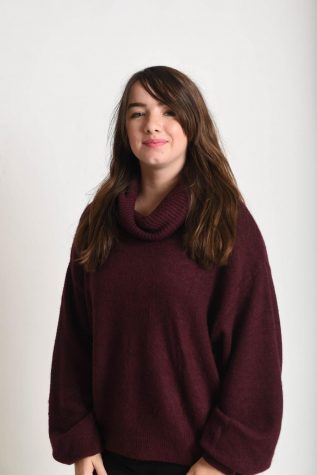
Hi I’m grace. My personality is mainly comprised of a busy schedule, buzzfeed quizzes, and Jeff Buckley.



